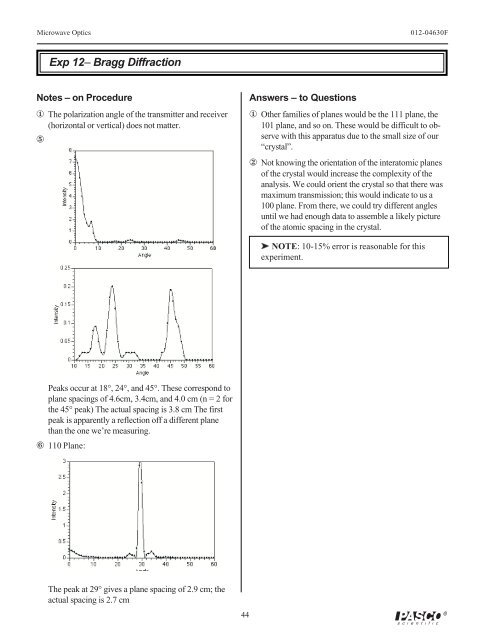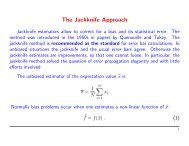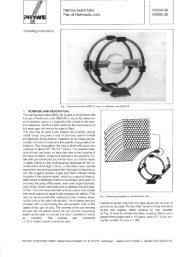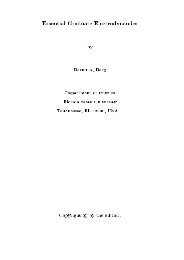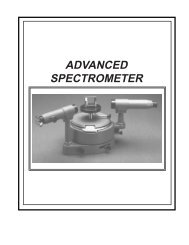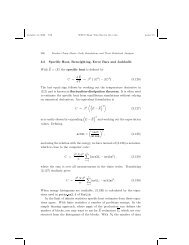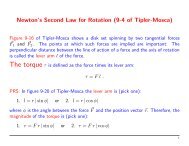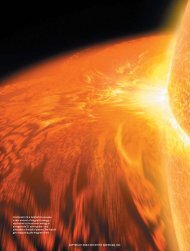MICROWAVE OPTICS - Granular Materials Laboratory
MICROWAVE OPTICS - Granular Materials Laboratory
MICROWAVE OPTICS - Granular Materials Laboratory
You also want an ePaper? Increase the reach of your titles
YUMPU automatically turns print PDFs into web optimized ePapers that Google loves.
Microwave Optics012-04630FExp 12– Bragg DiffractionNotes – on Procedure1 The polarization angle of the transmitter and receiver(horizontal or vertical) does not matter.5Answers – to Questions1 Other families of planes would be the 111 plane, the101 plane, and so on. These would be difficult to observewith this apparatus due to the small size of our“crystal”.2 Not knowing the orientation of the interatomic planesof the crystal would increase the complexity of theanalysis. We could orient the crystal so that there wasmaximum transmission; this would indicate to us a100 plane. From there, we could try different anglesuntil we had enough data to assemble a likely pictureof the atomic spacing in the crystal.äÿNOTE: 10-15% error is reasonable for thisexperiment.Peaks occur at 18°, 24°, and 45°. These correspond toplane spacings of 4.6cm, 3.4cm, and 4.0 cm (n = 2 forthe 45° peak) The actual spacing is 3.8 cm The firstpeak is apparently a reflection off a different planethan the one we’re measuring.6 110 Plane:The peak at 29° gives a plane spacing of 2.9 cm; theactual spacing is 2.7 cm44


